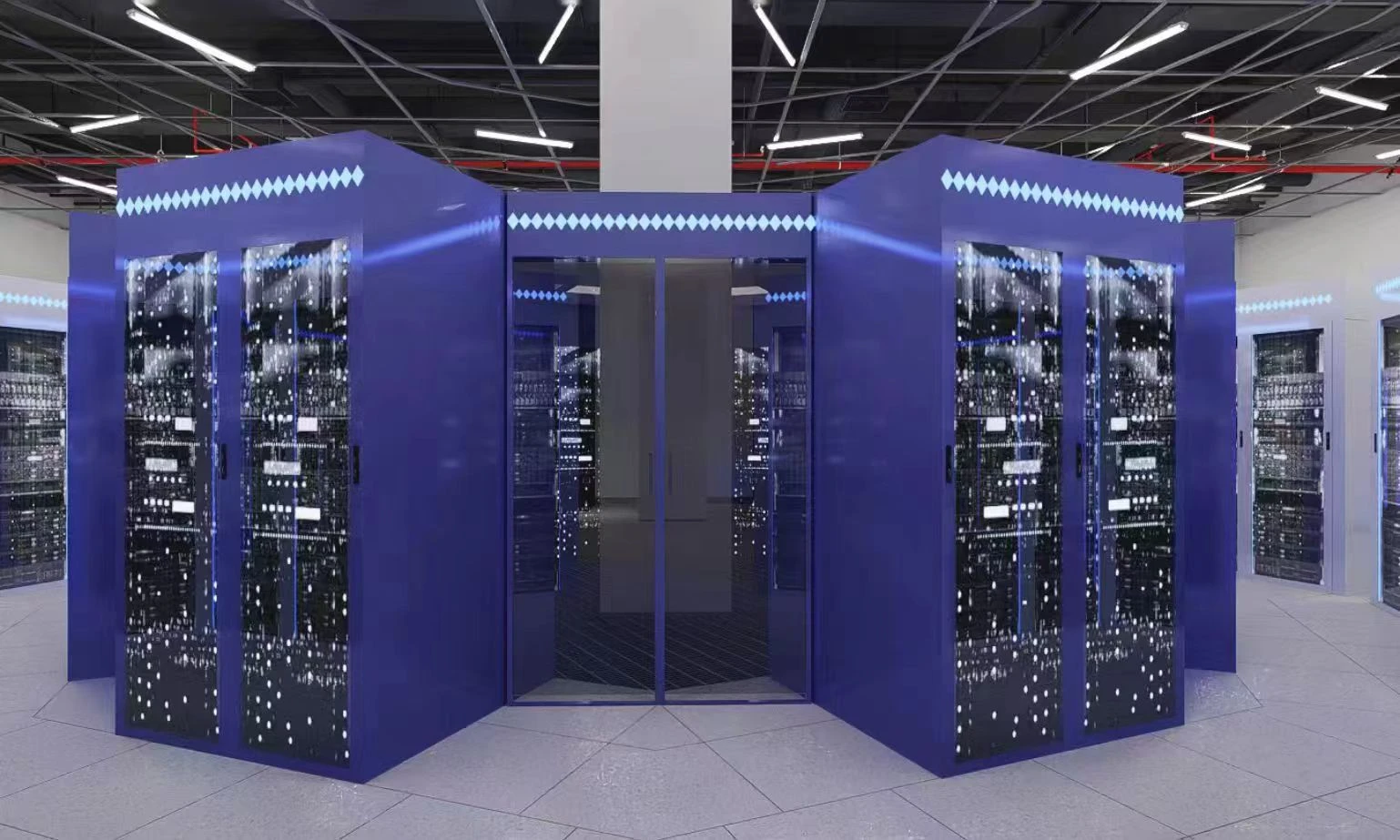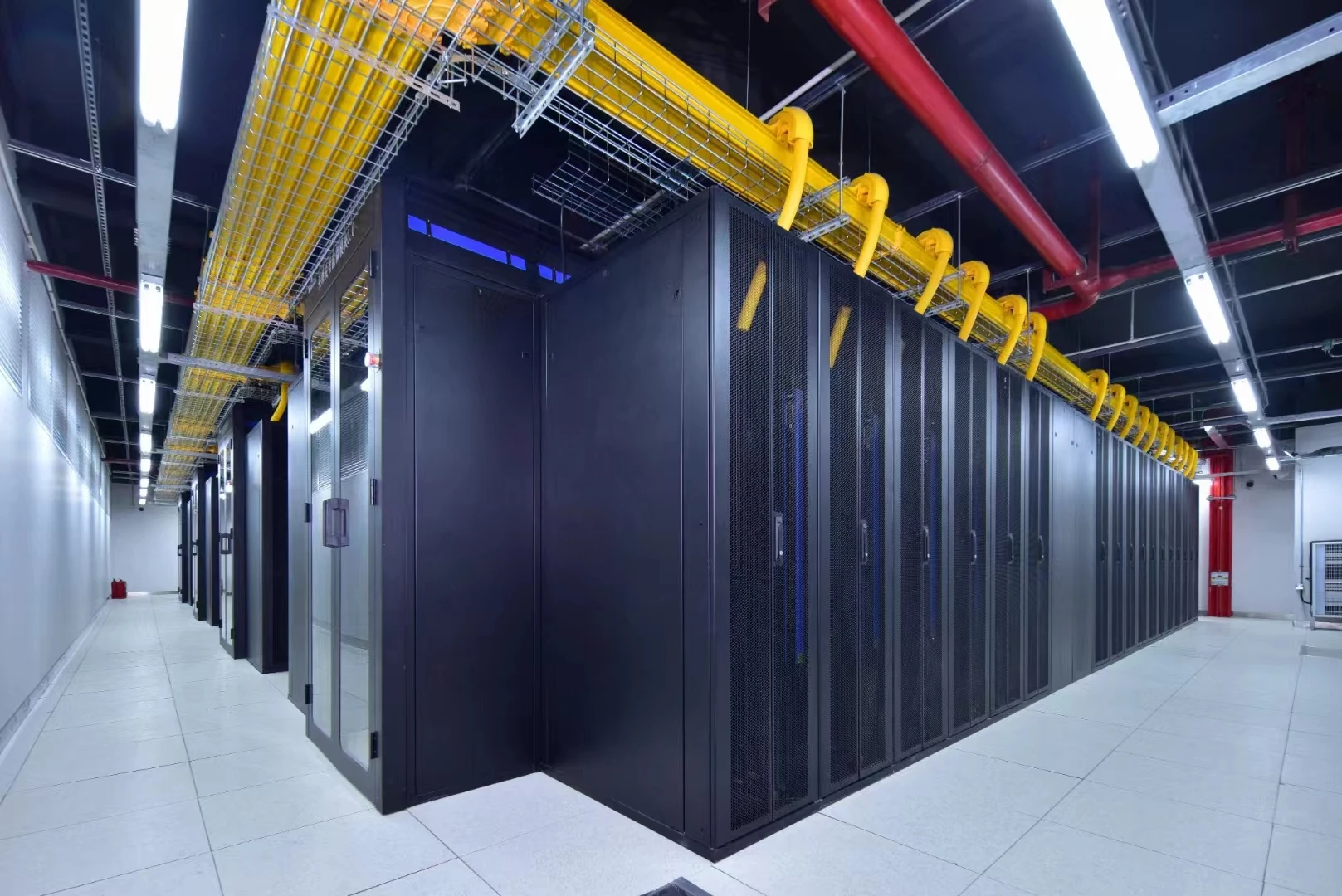
Agu . 19, 2025 00:40 Back to list
Advanced Energy Management Systems: Optimize & Save Costs
The Evolution and Strategic Importance of Energy Management Systems in Industry
In an era defined by escalating energy costs, stringent environmental regulations, and the imperative for operational efficiency, the strategic deployment of a robust energy management system (EMS) has transitioned from an optional enhancement to a foundational necessity for any forward-thinking enterprise. An EMS, at its core, is a comprehensive framework integrating hardware, software, and human processes to monitor, analyze, and optimize energy consumption across an organization's entire operational footprint. These systems empower businesses to gain granular visibility into their energy usage patterns, identify inefficiencies, implement corrective measures, and ultimately drive significant cost savings while reducing their carbon footprint. The industry landscape is currently witnessing profound transformations, propelled by advancements in IoT, AI, and big data analytics. Predictive analytics, for instance, now allows for forecasting energy demand based on operational schedules and external factors like weather, enabling proactive adjustments that were previously impossible. Furthermore, the convergence of EMS with smart grid technologies is opening avenues for demand-side management, allowing businesses to actively participate in energy markets and realize additional revenue streams. This paradigm shift underscores the EMS's pivotal role not just as a cost-cutting tool, but as a strategic asset for sustainable growth and competitive advantage in a resource-constrained world. The ability to precisely control and manage energy flows within complex industrial environments, such as those found in data centers or large manufacturing facilities, is critical for maintaining operational continuity and achieving sustainability objectives.
The drive for enhanced energy efficiency is further amplified by global initiatives targeting net-zero emissions, pushing industries towards more sustainable practices. Modern energy control systems are increasingly sophisticated, capable of integrating data from diverse sources including smart meters, sensors, building management systems (BMS), and even enterprise resource planning (ERP) platforms. This holistic data aggregation provides a centralized, real-time dashboard of energy performance, facilitating data-driven decision-making. Beyond simple monitoring, advanced EMS solutions incorporate machine learning algorithms to detect anomalies, predict equipment failures, and suggest optimized operational settings. For instance, in a large-scale manufacturing plant, an EMS can analyze the energy consumption of individual machines, identify peak load periods, and recommend scheduling adjustments to shift energy-intensive processes to off-peak hours, thereby leveraging lower utility rates. The benefits extend beyond immediate financial returns to encompass improved equipment longevity due to optimized operation, enhanced regulatory compliance, and a bolstered corporate image as an environmentally responsible entity. Businesses seeking to maximize the efficiency and reliability of critical infrastructure, like the Micro module computer room, find an integrated EMS indispensable for maintaining optimal environmental conditions and power efficiency.
The Advanced System Deployment and Lifecycle of an Energy Management System
The deployment of an advanced energy management system is a multi-stage process involving meticulous planning, precision engineering, and rigorous testing, ensuring optimal performance and longevity. It begins with a comprehensive energy audit to identify key consumption points and define specific objectives. Following this, the design phase focuses on selecting appropriate hardware components, such as high-precision smart meters (e.g., Class 0.2S for revenue metering accuracy), IoT sensors (e.g., temperature, humidity, vibration, current transducers with 0.5% full-scale accuracy), and robust data acquisition units, often built with industrial-grade materials like corrosion-resistant alloys (e.g., 316L stainless steel for sensor casings in harsh environments) and durable polymers that resist chemical degradation, ensuring a service life often exceeding 15-20 years. The manufacturing of these components adheres to strict quality controls, with processes like automated PCB assembly for controllers, CNC machining for sensor housings, and precision calibration of measuring devices, all performed in ISO 9001 certified facilities. For instance, high-quality current transformers (CTs) and potential transformers (PTs) undergo precise winding and encapsulation to meet ANSI C12.20 or IEC 62053 standards for metering accuracy, ensuring reliable data input for the EMS.

The integration phase involves seamless connectivity between hardware and software, often utilizing industry-standard communication protocols like Modbus TCP/IP, BACnet, or OPC UA, ensuring interoperability across disparate systems. Software development focuses on creating intuitive dashboards, real-time analytics engines, and customizable reporting modules, leveraging secure cloud-based or on-premise architectures. Each system undergoes extensive factory acceptance testing (FAT) and site acceptance testing (SAT) to validate functionality, accuracy, and compliance with project specifications and relevant standards such as ISO 50001 for energy management. These testing protocols ensure that the system can withstand operational conditions, providing reliable data even in demanding environments found in petrochemical plants, where explosion-proof (ATEX/IECEx certified) sensors might be required, or in large metallurgical facilities where high temperatures and electromagnetic interference are prevalent. The rigorous testing, including burn-in periods for electronic components, guarantees the robustness and precision of the energy monitoring and management system over its operational lifetime. Our solutions are designed to deliver exceptional energy savings, often leading to a 10-25% reduction in energy consumption for typical industrial installations, alongside enhanced operational stability and safety by preventing overloads and identifying potential equipment failures before they occur.
Technical Parameters and Core Advantages of Advanced EMS
A state-of-the-art energy management system is characterized by a suite of technical parameters that define its performance, scalability, and reliability. Key metrics include data acquisition frequency (e.g., sub-second resolution for critical processes), measurement accuracy (typically 0.5% for general monitoring, up to 0.2% for billing-grade), data storage capacity (scalable to petabytes for historical trends), and system latency (response times often under 100ms for control actions). The system's architecture typically supports thousands of data points, accommodating complex facilities. For instance, a robust EMS designed for industrial applications might feature a data logging capacity of 10,000 parameters at 1-second intervals for over 5 years, ensuring comprehensive historical analysis. Communication protocols are diverse, encompassing Ethernet, Wi-Fi, LoRaWAN, and cellular (4G/5G), ensuring connectivity even in remote or challenging environments. Cybersecurity is paramount, with AES 256-bit encryption for data in transit and at rest, multi-factor authentication, and compliance with standards like NIST SP 800-53 or IEC 62443. These technical capabilities collectively translate into significant advantages for diverse industries. For the petrochemical sector, an EMS offers precise control over energy-intensive distillation columns and pumps, optimizing process efficiency and ensuring compliance with stringent environmental regulations on emissions. In metallurgy, it aids in managing the massive power demands of arc furnaces, implementing load shedding strategies to avoid peak demand charges, and improving the overall power factor.

The core technical advantages of implementing a sophisticated energy control systems solution are multi-faceted. Firstly, it offers unparalleled energy efficiency through continuous monitoring and optimization. Predictive maintenance capabilities, driven by AI, detect anomalies in equipment performance (e.g., unexpected increases in motor current or temperature deviations in a chiller unit indicating impending failure), allowing for proactive intervention before costly breakdowns occur. This extends equipment lifespan and minimizes downtime. Secondly, improved operational control provides real-time insights into energy consumption, empowering facility managers to make immediate, informed decisions. Thirdly, enhanced regulatory compliance is achieved by generating accurate, verifiable data for reporting to environmental agencies and adhering to energy performance standards. Finally, financial returns are realized through reduced energy bills, avoidance of peak demand charges, and potential eligibility for energy efficiency incentives. For the water treatment industry, an EMS can optimize pump schedules based on demand and energy tariffs, significantly cutting operational costs and improving the reliability of critical infrastructure for municipal water supply. Our solutions often guarantee an ROI within 18-36 months, demonstrating tangible economic benefits alongside environmental responsibility.
Key Technical Parameters of a High-Performance Energy Management System
| Parameter | Description | Typical Range / Value |
|---|---|---|
| Data Acquisition Rate | Frequency of data collection from sensors and meters. | 1-5 seconds (Real-time), Configurable |
| Measurement Accuracy | Precision of energy consumption measurements. | 0.2% - 0.5% (IEC Class 0.2S / 0.5S) |
| Scalability | Ability to expand data points and monitored assets. | Thousands of data points, multi-site support |
| Data Storage Capacity | Volume of historical data retained for analysis. | 5+ years of granular data |
| Communication Protocols | Supported communication standards for device integration. | Modbus TCP/IP, BACnet, OPC UA, SNMP, MQTT |
| Cybersecurity Compliance | Adherence to cybersecurity standards. | AES 256-bit encryption, ISO 27001, NIST SP 800-53 |
| System Response Time | Latency for control actions or data updates. | Typically <100ms for critical controls |
Manufacturer Comparison and Tailored Solutions
When selecting an energy management system provider, businesses face a crowded market with varying levels of specialization and service offerings. Leading manufacturers often differentiate themselves through innovative technology, robust platform architecture, and extensive industry-specific experience. While some vendors offer generalized solutions, others, like us, focus on niche applications such as critical infrastructure management, exemplified by our expertise in powering and optimizing the Micro module computer room. Our systems distinguish themselves through their superior data granularity, advanced AI-driven analytics, and an unparalleled commitment to customization. Unlike off-the-shelf solutions that may force operational compromises, our approach involves deep collaboration to design tailored EMS architectures that precisely align with a client's unique operational processes, existing infrastructure, and long-term strategic objectives. This bespoke development ensures maximum integration efficiency and optimizes the return on investment. For instance, in a large-scale enterprise with multiple facilities, our system can be configured to aggregate data centrally while providing localized control, ensuring both corporate oversight and site-specific agility. Our solutions are built with future-proofing in mind, supporting integration with emerging technologies like renewable energy sources (solar, wind) and battery energy storage systems (BESS), ensuring our clients remain at the forefront of energy innovation.
Our track record of successful deployments across diverse industrial sectors underscores our capability to deliver tangible value. We understand that effective energy monitoring and management system implementations are not just about software; they require a deep understanding of electrical engineering, industrial automation, and data science. Our dedicated team of engineers and data scientists works closely with clients from initial consultation through deployment and ongoing support, offering comprehensive training and proactive maintenance. For a prominent client in the manufacturing sector, we deployed an EMS that optimized their HVAC system, lighting, and production lines, resulting in a verified 17% reduction in annual energy consumption and a significant decrease in carbon emissions, exceeding initial projections. This bespoke solution included advanced demand response capabilities, allowing the facility to automatically adjust non-critical loads during peak pricing periods, saving hundreds of thousands annually. Our commitment to client success is further evidenced by our extensive 24/7 technical support, a comprehensive 5-year warranty on all core components, and a guaranteed rapid response time for any service inquiries. Our average delivery cycle for a standard industrial EMS solution is typically 12-16 weeks from design approval to full operational readiness, ensuring minimal disruption to client operations.

Comparative Analysis: Standard vs. Customized EMS Solutions
| Feature | Standard EMS (Off-the-Shelf) | Customized EMS (Our Offering) |
|---|---|---|
| Integration Flexibility | Limited, relies on common protocols only. | High, adaptable to legacy systems and unique APIs. |
| Performance Optimization | General algorithms, may not suit specific processes. | Tailored AI/ML models for industry-specific optimization. |
| Scalability & Future-Proofing | May require costly upgrades for significant expansion. | Modular design, easily expandable for future needs (e.g., renewables, BESS). |
| User Interface & Reporting | Fixed dashboards, limited report customization. | Highly configurable dashboards, custom reports for specific KPIs. |
| Support & Service | Tiered support, often less personalized. | Dedicated project managers, 24/7 technical expertise. |
Frequently Asked Questions (FAQ) & Trust Building
Q: What is the typical ROI period for an energy management system?
A: The Return on Investment (ROI) period for an EMS can vary depending on the scale of implementation, pre-existing energy inefficiencies, and the specific industry. However, for most industrial and commercial clients, we typically observe an ROI within 18 to 36 months. This is achieved through a combination of reduced energy consumption (often 10-25%), avoidance of peak demand charges, improved equipment lifespan through optimized operation, and potential qualification for energy efficiency incentives or rebates. Our detailed pre-implementation energy audits and predictive analytics allow us to provide a highly accurate ROI projection tailored to your specific operational profile, ensuring transparency and confidence in your investment decision. This calculation often includes not just direct energy savings but also operational efficiencies gained from proactive maintenance and reduced downtime, bolstering overall financial performance.
Q: How does your energy monitoring and management system ensure data security and privacy?
A: Data security and privacy are paramount in our EMS solutions. We employ a multi-layered security architecture that includes end-to-end AES 256-bit encryption for all data in transit and at rest, secure data centers that adhere to ISO 27001 standards, and strict access controls including multi-factor authentication (MFA). Our systems are designed with cybersecurity best practices, aligning with frameworks such as NIST SP 800-53 and IEC 62443, to protect against unauthorized access, data breaches, and cyber threats. Regular security audits and vulnerability assessments are conducted by third-party experts to ensure continuous protection. Furthermore, all client data is treated with the utmost confidentiality and stored in compliance with relevant data protection regulations (e.g., GDPR, CCPA), ensuring that your sensitive operational data remains secure and private. Our commitment extends to physical security of our hardware components and strict adherence to data governance policies.
Q: What kind of after-sales support and maintenance do you provide?
A: We believe that superior after-sales support is crucial for the long-term success of any energy control systems deployment. Our comprehensive support package includes 24/7 technical assistance through dedicated phone lines and online portals, ensuring immediate response to any operational issues. We offer proactive remote monitoring of your EMS, allowing our engineers to identify and address potential anomalies before they impact your operations. Regular software updates and firmware upgrades are provided to enhance functionality, improve security, and incorporate new features. Additionally, we provide scheduled on-site maintenance services, comprehensive training programs for your operational staff, and a robust 5-year warranty on all core hardware components, ensuring peace of mind and sustained performance throughout the system's lifespan. Our goal is to forge a long-term partnership that extends beyond initial deployment, focusing on continuous optimization and support.
References
- International Organization for Standardization. (2018). ISO 50001:2018 - Energy management systems – Requirements with guidance for use.
- U.S. Department of Energy. (2020). Energy Management Systems: A Guidebook for Implementation.
- Institute of Electrical and Electronics Engineers (IEEE). (2019). IEEE Std 1547-2018 - Standard for Interconnection and Interoperability of Distributed Energy Resources with Associated Electric Power Systems Interfaces.
This is the last article
-
Advanced Energy Management Systems: Optimize & Save Costs
NewsAug.19,2025
-
Smart Energy Management System: Control & Monitor Usage
NewsAug.18,2025
-
EMS for Advanced Energy Management & Storage
NewsAug.17,2025
-
Boost Efficiency with Smart EMS Energy Management Systems
NewsAug.16,2025
-
Energy Management System (EMS): Optimize & Save Energy Costs
NewsAug.15,2025
-
Intelligent Energy Management: Save & Control Your Power
NewsAug.14,2025


